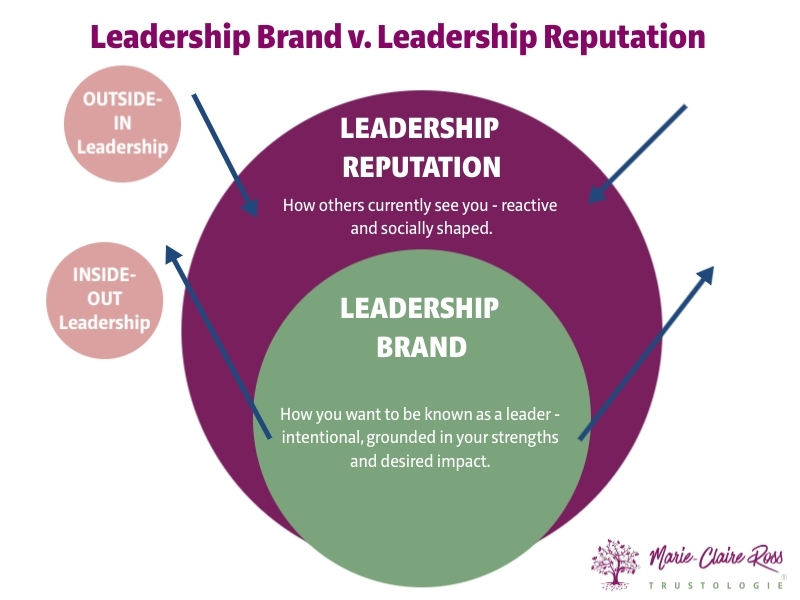6 Essential Executive Skills That Will Make You Unstoppable in 2026
The workplace is evolving at a pace few previous generations have seen and 2026 will mark a turning point. The Future of Work is blended, not hybrid....
Develop leaders, strengthen executive teams and gain deep insights with assessments designed to accelerate trust and performance.

Transform how your leaders think and perform with keynotes that spark connection, trust and high-performance cultures.

Explore practical tools, thought-leadership and resources to help you build trusted, high-performing teams.

Trustologie® is a leadership development consultancy founded by Marie-Claire Ross, specialising in helping executives and managers build high-trust, high-performing teams.

One of the most common complaints from employees revolves around whether they believe their organisation can be trusted.
People are tired of being uncertain at work and place a premium on a culture that consistently delivers the truth. An astonishing 81% of employees would rather join a company that values “open communication” than one that offers perks such as top health plans, free food, and gym memberships. No wonder that in the same survey undertaken by 15Five found that 85% of employees are unsatisfied with the quality of communication in their workplace.
Employees want to be informed of change management efforts before – not after the fact. They want to know what is expected of them and be empowered to reinvent themselves.
A perennial challenges of a leader is to determine how much information to tell employees, while refraining from discussing realities that might actually scare people, especially top talent. Many leaders today find themselves in uncomfortable ethical dilemmas, where they are having to balance salvaging their own jobs or reputation, while trying to maintain the trust and loyalty of their employees.
On top of all this, leaders often assume they have trust with people when they don’t.
An international study found that fewer than half of employees expressed confidence in senior management. While executives tend to have higher levels of trust than employees. This disconnect results in most employees distrusting senior management to make the right decisions. Employee trust levels are closely linked to performance. Left untouched, they leave companies vulnerable to high levels of fraud, staff turnover, customer churn and poor productivity and loyalty.
But it’s not easy to build trust. According to a Watson Wyatt survey, it takes an average of seven months for employees to build their trust in a leader but less than half that time for them to lose it.
Is it worth it? Given that high trust companies are more than 2.5 times likely to be high performing organisations in revenue growth than low trust organisations (Interaction Associates), the answer would appear to be affirmative. After all, low trust creates hidden agendas, interpersonal conflict, interdepartmental rivalries, win-lose thinking and protective communication. Low trust slows everything down with employees operating on false assumptions and applying valuable energy in the wrong direction.
Given that trust is so imperative in an organisation, what can a leader do to increase trust in every employee interaction?
Here are seven behaviours that break down trust and show you were to focus your efforts:
It might seem obvious, but when the going gets tough many leaders prefer to sugarcoat the situation, rather than acknowledge potential challenges. However, being upfront with employees, conveying reality and asking for their help, opens up the collective wisdom of your workforce, enabling them to come up with solutions that leaders are unable to on their own. It also ensures that they trust you, because they know you tell the hard truth.
Admit mistakes, even if it hurts you. It makes you more authentic and human. At the same time, you must demand the real truth from your employees and be a champion of the real truth. Otherwise, important information won’t go up the chain of command.
Actions speak louder than words. One of the fastest ways to restore trust, is to make commitments to others and stick with it. As the late Stephen Covey said “We judge ourselves by our intentions and others by their behaviour.” This is why one of the fastest ways to restore trust is to make commitments and keep them. And you can’t be reliable once. You have to repeat it over and over again.
If you do break promises, it allows others to believe it’s okay to not make commitments. That’s why this behaviour is so crucial to get right.
The more information you provide people, the less they remember and understand. Unwittingly, people will not trust you, if they find it onerous to wade through lots of information. Avoid presenting more than three ideas at the one time.
If you are inheriting a department that previously was run by a low-trust leader or you have a low-trust relationship with a contingent of employees, you are also more likely to be misunderstood. It doesn’t matter how careful and precise you are with your information. Unfortunately, people will misinterpret what you say and manipulate the intent. Your motive will be suspect and you’ll get push back from what is perceived to be your own agenda. To restore trust in this situation, work on telling the truth, doing what you say you will do and starting with your intent (see next).
At the start of a meeting, presentation or important face-to-face discussion, declare you intention by mentioning your agenda at the start of a meeting or talk. Not only does it get everyone focused on the task at hand, but it quickly establishes trust in new relationships. Also, be upfront if you’re not knowledgeable about the content and need advice. This is a powerful method that avoids your behaviour being misinterpreted or misconstrued by others.
For example, “In this meeting today, I intend to know more about how your department is tracking, so I am better able to provide you with the support you need to help you reach your three priorities. I don’t want you thinking you’re on your own to solve this issue.”
One of the fastest ways to blow trust in work relationships is to take credit from someone else (when they did all the work or it was their idea). When I worked in market research, I was assigned a mentor who was a recent recruit from the United Kingdom. The new director was very friendly and everyone was smitten by her credentials. In one of our private meetings, I mentioned an idea on how the company could cut costs. She seemed unimpressed and quickly dismissed it. But in the next team meeting she proudly announced to everyone, “I have this fabulous new idea” and vaguely suggested mine. I was gob-smacked and instantly knew I couldn’t trust her.
While few executives or leaders are that dodgy with taking credit from their subordinates, another way is take credit as the leader, ignoring the efforts of the team. Being humble and demonstrating that you’re there to help people in their careers, rather than serve your own aspirations, is a more trustworthy behaviour.
The central pillar for building trust is a corporate purpose that’s defined by a genuine commitment to the social good. A socially relevant purpose that’s defined, communicated and embedded throughout the organisation provides employees with the context they need to understand how their work makes a difference to the world. And it makes a lot of sense. After all, we’re more likely to trust a company that they’re ethical, if we can see proof that they’re visibly making a difference to the world and not just paying lip service to it. A Deloitte study found that 81% of respondents working for organisations with a strong sense of purpose say their stakeholders trust their leadership team versus 54% for their counterparts.
Always connect people back to the company purpose in all your meetings and presentations.
There are two aspects to belief. The first is believing people can be trusted. Demonstrate this by modelling trust behaviours and leading by example. Always be the first to trust and ensure that compliance systems are designed with the intention that the majority of people want to do the right thing.
The second aspect is believing that employees can reach both individual and team goals. Letting people know that you believe that a new goal can be achieved, no matter how difficult it appears to be, helps everyone feel more positive. Being a leader that believes in people is an extremely important method to build trust.
Throughout the day, leaders need to consciously consider how they will build trust with people, rather than betray them. Anytime when you act in a way that decreases trust, your employees will see it as an act of betrayal. To actively build trust leaders need to place a premium on fostering transparency and providing a safe place for people to speak up. They also need to establish a shared purpose, so that it’s integrated into the everyday language and practices of the company for widespread adoption. Without trust, there is no meaningful connection between people.
There is one more important area that needs to be mentioned. A lot of leaders feel uncomfortable with sharing financial information. In studies on trust, the only information employees get upset about knowing is what their peers are earning. Never share any information that is personal, in other words what is not yours to share. Any other corporate financial information is fine and helps employees understand how the business makes money. Companies such as 1800-JUNK and Method even teach their employees how to read a profit and loss statement, so they understand what it all means. The result is their employees understand why a budget might need to be slashed and be able to contribute ideas to reduce costs and make money.
Organisations that have trust in leadership are more likely to be innovative, productive, profitable and less risk averse. Trust is good business and it starts with leadership.

The workplace is evolving at a pace few previous generations have seen and 2026 will mark a turning point. The Future of Work is blended, not hybrid....

Many leaders jump into a leadership position excited by the opportunity to help others and perform at a higher level.

What makes a good team leader isn’t just about having authority or getting tasks done - it’s about the ability to create an environment where people...

Since 2005, I have spent 30 minutes every New Year's Eve writing down three things on a blank piece of paper: 1. What am I grateful for? 2. What am I...
Have you ever started a new job or worked with a new team and realised that you needed to build trust fast?
Years ago, an aspiring general manager had the misguided idea that reducing biscuit purchases would enable a hospital to save around $3,000 a year....